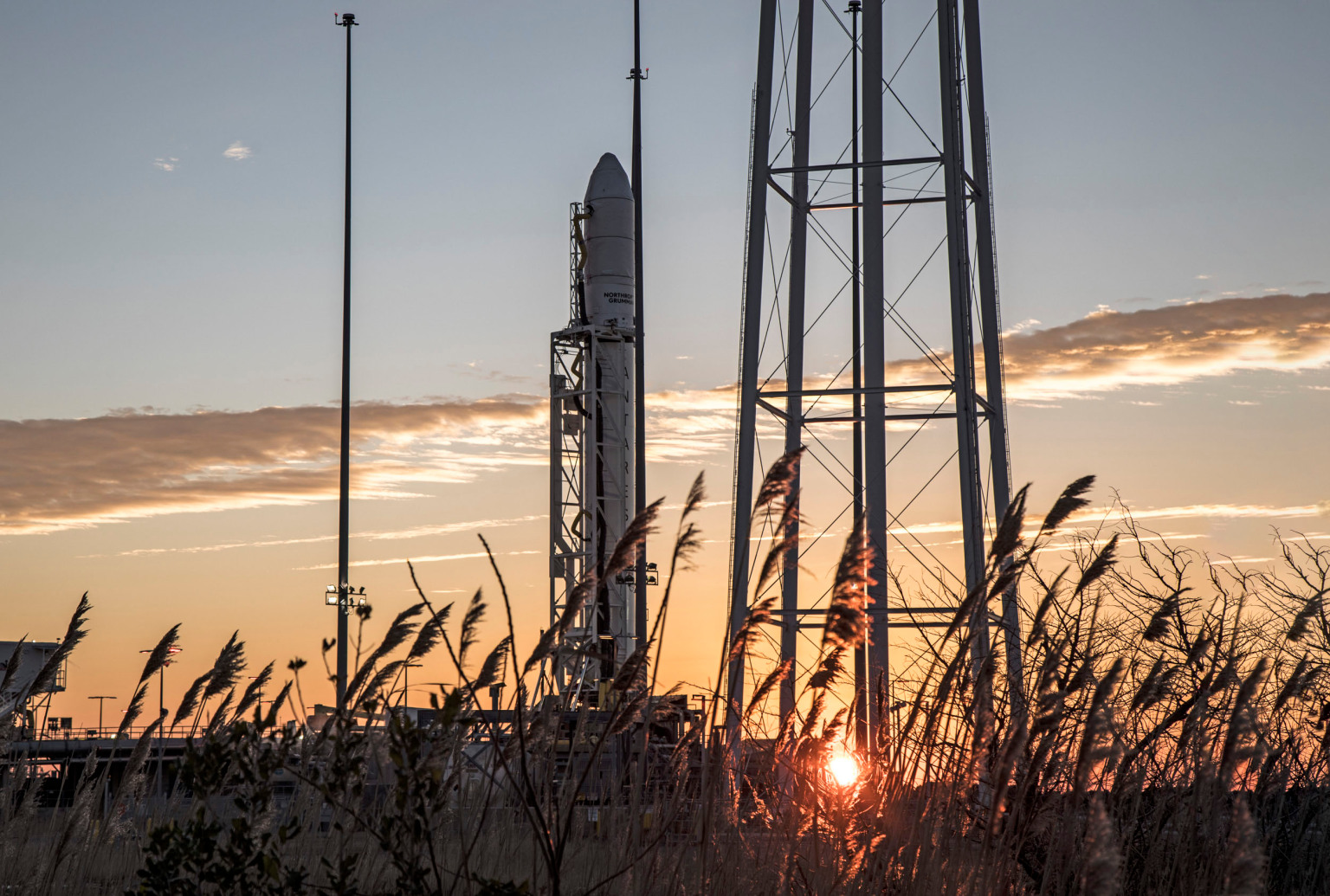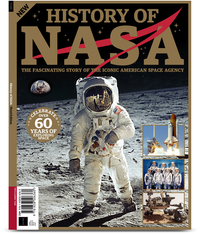NASA resupply mission prepares for Saturday launch to space station

NASA and Northrop Grumman are set to launch a Cygnus cargo capsule chock-full of research and supplies to the International Space Station (ISS) on Saturday, Feb. 20.
The flight will blast off from Pad 09A at Wallops Flight Facility in Virginia during a planned five-minute window that opens at 12:36 p.m. EST (1736 GMT).
A two-stage Antares rocket, standing 139 feet (42.5 meters) tall, will haul the Cygnus spacecraft into orbit, kicking off a two-day voyage to the ISS. Once it arrives at the space station, Cygnus will berth to the orbital outpost with the help of the station's robotic arm.
Related: See amazing launch photos of Antares and Cygnus NG-13!
History of NASA: $22.99 at Magazines Direct
Discover the story of how and why NASA was created, its greatest triumphs, darkest days, and of the times it exceeded all possible hopes. A tale of adventure, heroism and resourcefulness, learn of the space agency's greatest achievements and how — over six decades — the organization has consistently and tirelessly devoted itself to its founding principle: that "activities in space should be devoted to peaceful purposes for the benefit of all humankind".
Both the Cygnus spacecraft and the Antares rocket are built by Northrop Grumman, which is one of two companies that are currently delivering cargo to the ISS for NASA. (SpaceX is the other.) The duo rolled out to the launch pad on Feb. 17 ahead of Saturday's planned launch.
The mission, designated NG-15, is the 14th operational resupply launch for the space station by Northrop Grumman and its predecessors, Orbital Sciences and Orbital ATK, as part of its commercial resupply services contract with NASA.
Northrop Grumman is continuing its tradition of naming the Cygnus spacecraft after an individual who made key contributions to human spaceflight. In this case, the silvery spacecraft is named the S.S. Katherine Johnson, after the late mathematician whose calculations made it possible for John Glen to orbit the Earth 59 years ago.
Get the Space.com Newsletter
Breaking space news, the latest updates on rocket launches, skywatching events and more!
Cargo ships carry essential supplies and food for the astronauts on the space station, but also loads of research investigations. On this mission, Cygnus will deliver approximately 8,200 lbs. (3,700 kilograms) of science experiments, supplies and hardware for the space station's Expedition 64 crew.
The spacecraft will also carry 30 cubesats as part of a student outreach program for Virginia's Commercial Space Flight Authority that it will deploy shortly after launching.
Typically cargo vessels remain attached to the station for a month or two, allowing the crew to refill them either with cargo to return to Earth or, as for Cygnus, with trash to burn up when the spacecraft re-enters the atmosphere.
Tucked inside the cargo vehicle will be a number of research investigations, including a study that will look at muscle strength in worms, one that will look at printing protein-based artificial retinas in space, another that will test a new space computer, and many more.
Japanese astronaut and Expedition 64 crewmember, Soichi Noguchi, will use the station's robotic arm to grapple the Cygnus, with an assist from NASA crewmate Mike Hopkins. Mission Control in Houston will then oversee the spacecraft's installation on the station's Unity module Earth-facing port.
Cygnus will remain attached to the station for approximately two months before performing a destructive re-entry into the Earth's atmosphere.
Follow Amy Thompson on Twitter @astrogingersnap. Follow us on Twitter @Spacedotcom or Facebook.
Join our Space Forums to keep talking space on the latest missions, night sky and more! And if you have a news tip, correction or comment, let us know at: community@space.com.

Amy Thompson is a Florida-based space and science journalist, who joined Space.com as a contributing writer in 2015. She's passionate about all things space and is a huge science and science-fiction geek. Star Wars is her favorite fandom, with that sassy little droid, R2D2 being her favorite. She studied science at the University of Florida, earning a degree in microbiology. Her work has also been published in Newsweek, VICE, Smithsonian, and many more. Now she chases rockets, writing about launches, commercial space, space station science, and everything in between.










